How to Become a Lifeguard
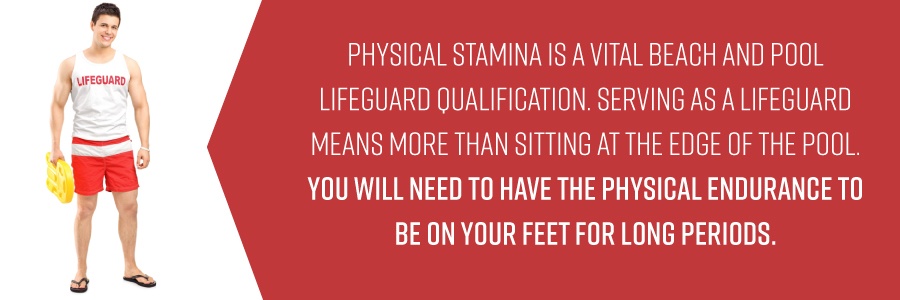
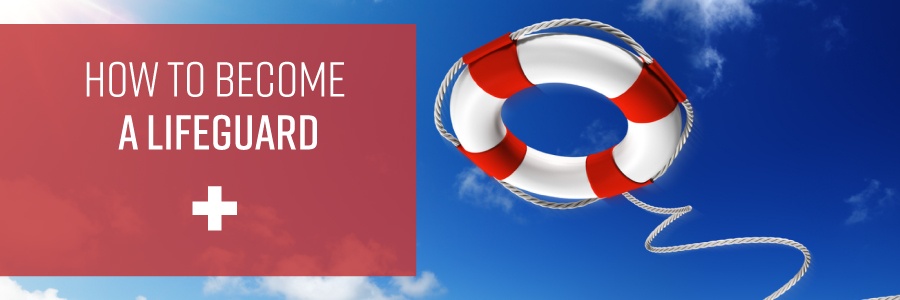
Lifeguards play an essential role in water safety, both in the pool and at the beach. In 2016, lifeguards rescued a total 89,003 people. The odds of drowning at a beach with lifeguards trained under United States Lifesaving Association standards is less than one in 18 million. If you want to take on the responsibility of becoming a lifeguard, you will need to undergo training and certification. This comprehensive guide will walk you through the requirements to become a lifeguard.
Requirements and Qualifications to Become a Lifeguard
Before you dive into lifeguard training, you need to be sure you meet all the requirements to qualify as a lifeguard. Check off this list of lifeguard requirements before you start researching training courses.
- Age: The U.S. Department of Labor sets the minimum age of employment at 14 years. Therefore, you should be at least 14 years old before you pursue lifeguard classes. The American Red Cross, which offers lifeguard training and certification, requires its students be at least 15 years old by the last day of training. So, you can expect you will need to be at least 15 years old to find a job as a lifeguard, but specific pools and beaches may have different age restrictions. For example, the YMCA requires students to be 16 years old by the end of training.
- Physical stamina: Physical stamina is a vital beach and pool lifeguard qualification. Serving as a lifeguard means more than sitting at the edge of the pool. You will need to have the physical endurance to be on your feet for long periods. You will also need strong swimming skills in case you need to jump into the water in an emergency situation. Lifeguarding also entails a certain amount of pool maintenance, so you will need to be able to lift and carry heavy equipment during your shifts.

- Adequate hearing and vision: Beaches and pools can become crowded, particularly during the summer. You will need to be able to see and hear what is going on in the water. Drowning is hardly ever apparent. You won't hear loud yells or see a whole lot of splashing. Lifeguard training will prepare you for the subtle signs of drowning, but you will need strong enough vision and hearing to pick up on those signs and act in time.
- Hand-eye coordination: Strong hand-eye coordination is vital for successfully handling emergency situations in the water. You may need to jump into the water with lifesaving equipment and swim to a person in distress.
Training Necessary to Become a Lifeguard
Lifeguard training requirements can vary depending on the pool or beach, but there are some basic tests you will need to pass to become a lifeguard anywhere. Here are some of the necessary tests you will need to pass during lifeguard training.
- Treading water: You will need to be able to tread water using only your legs for at least two minutes.
- Swimming stamina: Lifeguards-in-training will need to swim at least 300 yards continuously with breath control. You can choose to swim freestyle or breaststroke, but not backstroke or sidestroke.
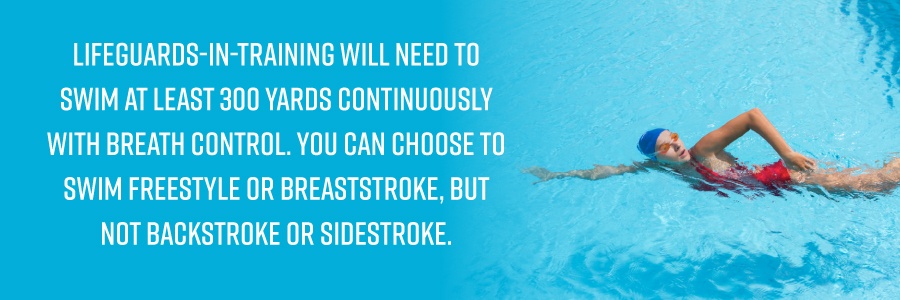
- Brick retrieval: You will also need to be able to surface dive, either headfirst or feetfirst, and retrieve a 10-pound brick from a depth of seven to 10 feet. After recovering the object, you will need to swim a minimum of 20 yards and get out of the water without the aid of a ladder.
Lifeguards will also need to undergo CPR for the professional rescuer. Many lifeguard courses will include the training and certification process for both. CPR training typically covers the following.
- First aid: The first-aid portion of the training will cover how to handle injuries like cuts, scrapes and burns.
- CPR: CPR, short for cardiopulmonary resuscitation, involves a series of chest compressions and breaths. A lifeguard training course will teach you this lifesaving skill with the help of dummies. You will learn the different techniques for infants, children and adults.
- AED: Automated external defibrillators, or AEDs, are common at pools, and lifeguards will learn how to use one. In case of a heart attack, an AED can help return the heart's normal rhythm.
- Heimlich maneuver: Lifeguards will also learn the Heimlich maneuver, a lifesaving skill for when someone is choking. Just like CPR, lifeguards will learn the proper Heimlich maneuver technique for infants, children and adults.
During training, you will also need to pass a written exam on the skills you have learned.
Classes You Can Take to Become a Lifeguard
Learning how to become a lifeguard means you will need to find somewhere to complete formal training. Check local pools to see where you can sign up for training. Here are some of the various courses you can take to help you become a qualified lifeguard.
- Lifeguarding full course: The American Red Cross is one of the primary organizations that train people how to become lifeguards. You can take the full lifeguarding course, which includes CPR and first-aid training, either in person or through a combination of in-person and online training. To qualify for the course, people must pass a basic swimming skills test. After that, the full training course takes approximately 25 hours — it will be slightly longer for the in-person and online combination. Lifeguard certification lasts for two to three years, depending on state law. The American Red Cross offers recertification courses.
- USLA Lifeguard Agency Certification: The United States Lifesaving Association developed the Lifeguard Agency Certification Program, which some employers offer. This training program is specifically for certifying open-water lifeguards, and would benefit anyone aiming to become a beach lifeguard.
- Basic Swim Instructor training: The American Red Cross also offers Basic Swim Instructor (BSI) training, which prepares lifeguards to teach the fundamentals of swimming.
- Water Safety Instructor training: Water Safety Instructor training, more comprehensive than BSI training, prepares lifeguards to teach swimming to all age groups.
- Shallow Water Lifeguarding training: The American Red Cross' Shallow Water Lifeguarding course is an entry-level program designed to teach participants the skills needed to lifeguard in shallow water up to five feet in depth. Requirements for this course include swimming 100 yards without stopping, treading water for two minutes with only the legs and completing a timed retrieval of a 10-pound object.
- Aquatic Attraction Lifeguarding training: Aquatic Attraction Lifeguarding, another American Red Cross course, trains lifeguards for water parks with water depths up to three feet. The entire course takes 22 hours and 30 minutes.
Aside from the American Red Cross, several other organizations provide lifeguard training for pools. Regulatory agencies recognize training from Elis & Associates, National Aquatic Safety Co., the YMCA and Starfish Aquatics Institutes/StarGuard.
Responsibilities of Being a Lifeguard
Getting paid to spend the day at the pool or the beach seems like a dream job. Lifeguarding certainly can be fun, but it does come with responsibility. Once you complete training, here are the job duties you can expect as a lifeguard.
- Monitor the water and swimmers: A lifeguard's primary job is monitoring the water, whether at a pool or a beach, and the swimmers in it. That means spending long hours on your feet and paying close attention. If a swimmer is in distress, you will need to jump into the water and come to his or her aid. An emergency situation like this is where much of your training will come into play.
- Teach swim lessons: Some lifeguards also serve as swim instructors. American Red Cross training can help prepare you to become a swim instructor. If this is one of your responsibilities as a lifeguard, you will spend time in the pool with young children. You will teach them the basics of staying afloat in the water, proper breathing techniques and the different swimming strokes. Depending on what pool you work at, you may also work with teenagers and adults.
- Track the weather: Closely monitoring weather conditions will be a large part of your job if you serve as a lifeguard at an outdoor pool, water park or beach. Storms can come on quickly in the summer, and you will need to watch for signs of impending bad weather. If you do see a storm coming, it will be part of your job to get all the swimmers safely out of the water.
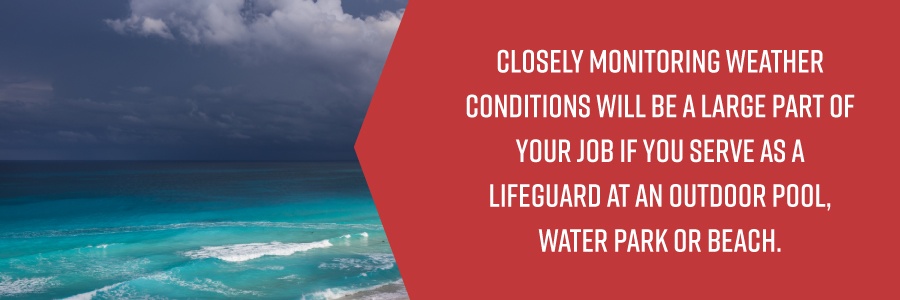
- Manage pool cleanliness: As a lifeguard, you will do some of your work before and after the pool or beach opens for swimmers. At a pool, you may be responsible for treating the pool water with chemicals and cleaning up the locker rooms. If you lifeguard at the beach, you might have to help keep the beach and any facilities on the beach clean.
What Gear You'll Need as a Lifeguard
You will need the right gear when you work as a lifeguard. Here's a list of the basic supplies you will need on the job.
- Swimsuit: If you are going to be spending your workday in and by the water, you will need proper swimwear. You might be in the water teaching swim lessons, or you might be by the side of the water, but as a lifeguard, you can almost guarantee you will get wet at some point during the day. Find a swimsuit, or two, you can stay active in and wear all day comfortably.
- Water bottle: Lifeguarding is an active job, and you will need to stay hydrated throughout your shift. That is particularly important if you are working at an outdoor lifeguard job. Invest in a quality water bottle you can keep filled throughout your shift. You won't be able to run back and forth to a water fountain, especially if you are supposed to be watching the water.
- Sunglasses: If you are working at an outdoor pool or a beach, you will need sunglasses to protect your eyes and ensure you can keep a close watch on the water. It is also essential to apply sunscreen regularly when you are working outside all day.
- Equipment pack: Lifeguards typically rotate posts throughout the day. Carrying an equipment pack helps you make sure you have everything you need, like sunglasses, sunscreen and first-aid equipment, in one place.
- Towel: A towel is one of the necessities for going to the beach or the pool. Don't forget to grab one for yourself each time you head off to work.
While you will be responsible for coming to work with this type of basic gear, you can expect the pool or beach you work at to supply some of the necessary tools of the trade. Your workplace will likely provide rescue gear like rescue tubs, rescue boards, buoys, a megaphone and first-aid kits. All your training will have prepared you to use this equipment if necessary.
Benefits of Being a Lifeguard
Lifeguarding comes with a lot of responsibility. In this role, you can literally save lives. The job also comes with its perks.
- The pay: Lifeguards typically get paid by the hour. The average pay rate for lifeguarding is $9.18 per hour, but you can make more depending on where you work and your job responsibilities. For example, experienced beach lifeguards can make as much as $16 per hour.
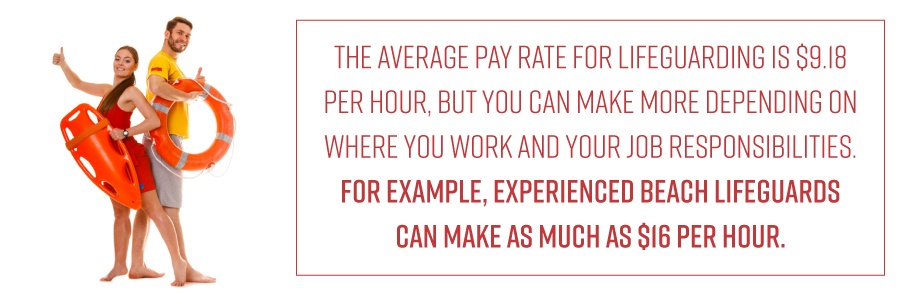
- The locations: Chances are you love the water if you are interested in becoming a lifeguard. That means your job location will be right up your alley. Beaches and pools are often beautiful spots to spend your time.
- The hours: A lifeguard is a recreation worker, which means you will probably work under 40 hours a week. Approximately 40 percent of recreation workers work on a part-time basis. You will likely be working a schedule with flexible hours. If you work at an outdoor pool or beach, the work will be seasonal. If you work at an indoor pool, the work can be year-round, but your supervisor will likely call upon you to work nights and weekends. This type of flexible schedule can be very beneficial for people who are juggling other responsibilities, like school.
- Physical fitness: Lifeguarding can be a physically demanding job, which means you will be getting paid to stay in shape. Plus, many beaches and pools will offer their employees discounts or after-hours access to the water. When you aren't working, you can get in the water and knock out some laps to stay fit.
As you are working through the hours of training to become a lifeguard, you can help prepare yourself by getting the right gear. Find the right swimsuit and apparel for the outdoor pool, indoor pool or beach you hope to watch over as a fully certified lifeguard.



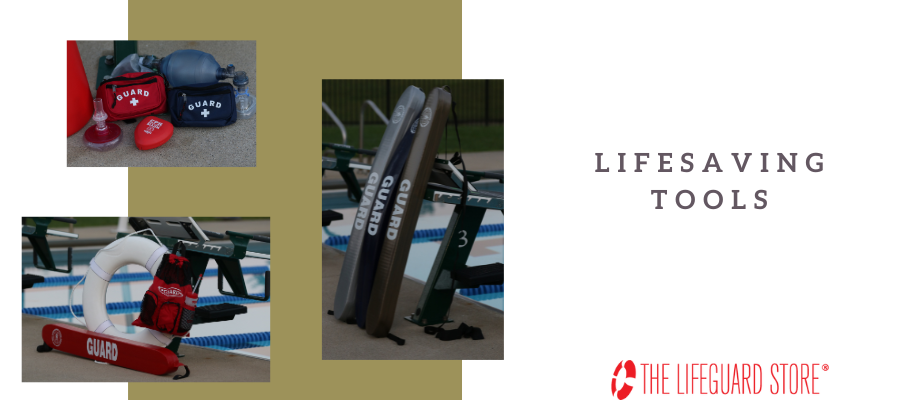
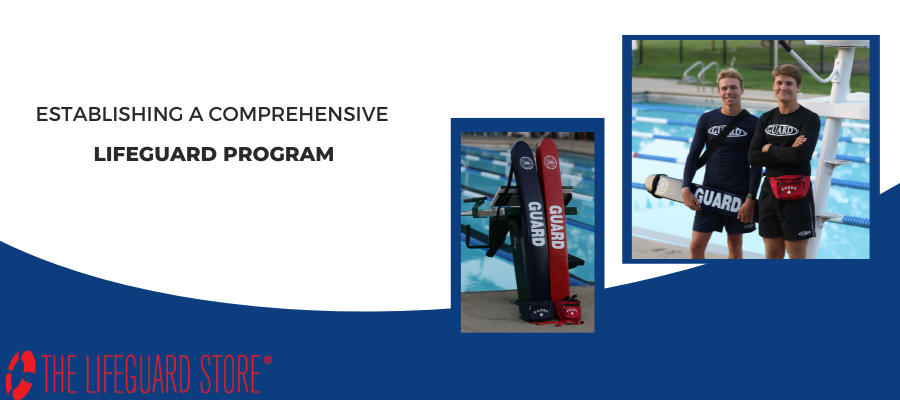
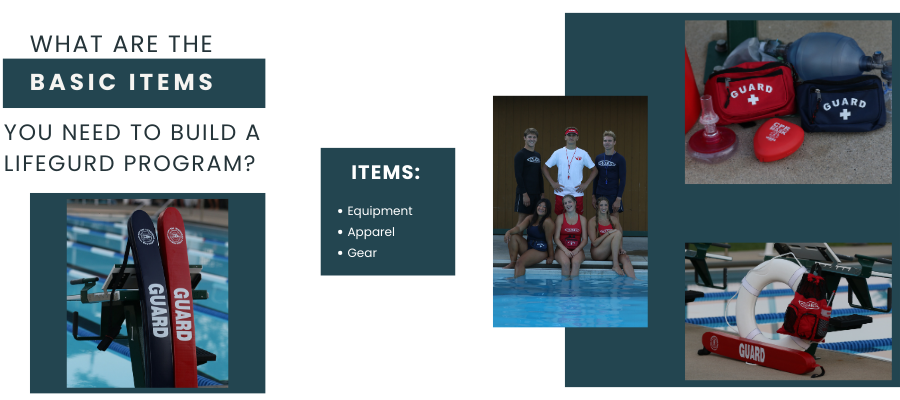
Leave a Comment
Your email address will not be published. Required fields are marked *